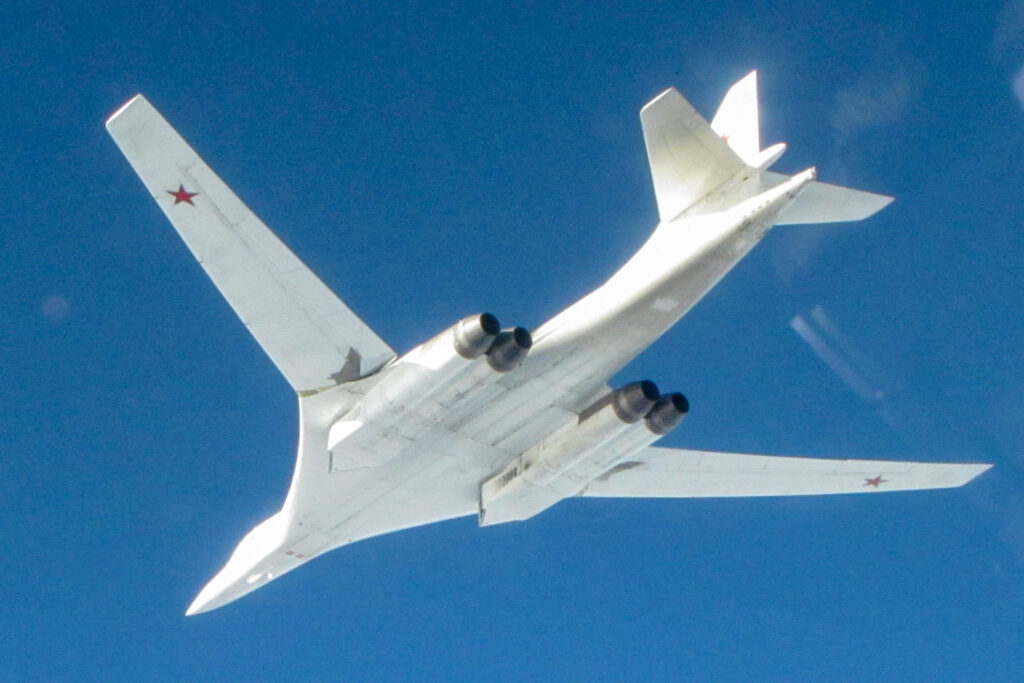In recent days, multiple flights of Russian long-range aircraft near the British identification zone have put the Royal Air Force on alert. The latest one, on March 12, 2020, saw two Tupolev Tu-160 Blackjack strategic bombers being intercepted by a patrol of RAF Typhoon fighter jets.
The strategic bombers “approached the UK Flight Information Region (FIR) north of the Scottish coast before flying down the west coast of Ireland,” outlined the Royal Air Force.
“The interception by RAF Typhoons and other NATO fighters of the Russian bombers for the third time in a week demonstrates our continuing resolve to police, protect and defend our airspace 24 hours a day, 365 days a year,” said RAF Air Vice Marshal Duguid. An RAF Airbus A330 MRTT Voyager tanker aircraft was also scrambled to support the fighters.
The services of NATO fighter jets and their allies were indeed quite heavily solicited by the Russian aviation in the last six days.
On March 7, two Tu-142 “Bear” maritime patrol planes and their escort, a MiG-31 fighter jet, were spotted above the North Sea.
The flight group first triggered a response from the Norwegian Air Force, which used two of their new F-35A fighter jets for the first time for an interception. “The armed forces are constantly monitoring the airspace over and around Norway,” said the Luftforsvaret, the Norwegian Air Force, adding “so far, the F-16 has carried out this mission from Bodø, but on Saturday the F-35 carried out this mission for the first time.”
The Russian aircraft then changed their course towards the British air identification zone, where they were accompanied by the British Typhoons. The aircraft eventually turned around, catching once again the attention of the Norwegian F-35As.
Four days later, on March 11, another pair of Tu-142s was spotted, this time off the West coast of the United Kingdom near the Shetland Islands. Their activities were first monitored by the Typhoons until they reached the Bay of Biscay, off the French coast.
There, the Quick Reaction Alert force of the French Air Force took over. According to the local media Opex 360, it was no coincidence that while the two aircraft were flying near the coast of Gascogne, the flagship of the French Navy, the aircraft carrier Charles de Gaulle was also cruising in the Bay of Biscay.
“These Russian bombers do not comply with international air traffic rules, are a hazard to airliners and are not welcome in our airspace,” said RAF Air Chief Marshal Mike Wigston. “RAF Typhoons, alongside our NATO allies, ensured these Russian aircraft posed no hazard.”
The Russian Ministry of Defense contradicted the claim, saying that training flights “were carried out in strict accordance with the international rules for the use of airspace,” as they flew strictly “over neutral waters.”
The increased frequency of Russian shows of force could be explained by the then-upcoming NATO Exercise Cold Response 2020, which was to involve more than 15,000 soldiers in northern Norway. On March 11, the Norwegian authorities canceled the exercise due to the coronavirus outbreak.
Since the Cold War, strategic bombers have been used as diplomatic weapons for the United States and Russia. The trajectory or destination of their flights often carries a message.
Read more: Russia signs contracts for Tupolev future strategic bomber PAK-DA


